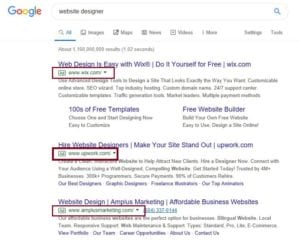Have you ever stopped to consider how many ads you are exposed to on a daily basis? Ads are everywhere from the signs at a bus stop, the commercials on tv, the sidelines of professional sporting events, to banner ads on your local news website. The actual number of ads people are exposed to varies from person to person, but it can range anywhere from 500 to 4,000 ads a day. That’s a lot!
With this constant bombardment of ads, it’s easy to see how people have learned to tune them out. After a while, it all just becomes white noise and it’s hard to distinguish one ad from the other.
From an advertising perspective, this may seem like bleak news because all the time and money spent on traditional online ads might not be getting through to consumers. But don’t fret about digital advertising coming to an end. Marketers have become wise to this problem and have devised a solution to get companies noticed again.
After studying the way people digitally work, marketers have learned that people online search for relevant content to their queries. They ignore the ads and hone in on content that gives them answers to their questions. So with some formatting changes and the addition of more useful content a new form of consumer marketing was created. This method is called native advertising.
What is Native Advertising?
One marketing CEO defines native advertising as “paid advertising where the ad matches the form, feel, function, and quality of the content of the media on which it appears.” Basically, this means that the ads blend into the surrounding content and are not obtrusive to the viewer.
Native advertising is not new but you might not notice how prevalent it really is. Click To Tweet
What Does Native Advertising Look Like?
Native advertising is not a new concept and you are seeing it in action every day. However, due to the way it is formatted you might not notice how prevalent it really is.
Native advertising can take a number of forms, but here is one example of it at work. We ran a Google search for the term “website designer”.

Before any organic search results appear, a few “Ad” links show up first. The owners of this content paid for the privilege of showing up at the top of the search engine results page. But due to the way it is formatted, it looks just like the rest of the search results that were returned.
Because they are at the top of the page and the descriptions sounds like the content would address your query, there is a good chance that you will click these first rather than scroll further down to get to the organic search results.
The Purpose of Native Advertising
According to Matt Mansfield there are two main reasons why native advertising is used.
First it is used to keep a brand top of mind for a consumer. Frequent exposure to a brand helps build brand credibility in the mind of the consumer. Additionally, when the person needs something that your company can provide, the consumer will think of your company first rather than a competitor.
Secondly, it can help guide a consumer to take a particular action. For example, if the consumer typed specific phrases into a search engine and your ads popped up, the positioning of the ad and the description of your site could sway the consumer to click on your site.
Why You Should Use Native Advertising
With the constant stream of ads people have to deal with on a daily basis, the consumer’s ability to tune them out is growing. This along with the ad-blocking software means that traditional digital ads are not having the same impact that they once did.
Native ads on the other hand are not as easily recognizable by the ad-blocking software. Their ability to blend in with the surrounding content makes them more appealing and often make it through the filters. This means that consumers have a greater chance of still seeing your ad.
Also, because these ads often include content that can be relevant to the consumer, there is a greater chance that they will be clicked on. In fact, once study found that consumers are 20-60% more likely to interact with a native ad than a traditional banner ad.
This means that the more people you can get to interact with your ads, the greater the chance that you can convert them into customers.
Final Thoughts
While it does not replace traditional advertising methods, native advertising is another tool for companies to use. Its ability to blend into its surroundings allows native ads to be subtle in their approach rather than being loud and obtrusive like traditional ads. If you haven’t considered using native advertising, we suggest giving it look.
———-
In plain terms, WordPress (WP) is simply the top free platform upon which one can create
fantastic fully-featured websites or blogs of any size (best among both free or paid solutions).
Learn more about WordPress here.
***Gain more insight about how to install WordPress & your options.***
If you would like to consider working with us on our Premium or Standard Plans on a ongoing monthly basis, then we can do the job FREE as a trial (with no credit card required and assumes you have a interest potentially becoming a Standard or Premium Plan member . . . otherwise, please use the single one-off job option below).
See here: https://www.wpwebsitehelp.com/#plansandpricing
OR
2. If you only need us to do this one job only, then checkout here for this one-off single job.
See here: https://www.wpwebsitehelp.com/single-one-job/
Our plans can cover ongoing maintenance & annoying regular task items, of which, you should not spend your valuable time! This gives you peace of mind so you can focus your mind on your endeavor. We have you covered whether it is WordPress help or WordPress support for a business, personal, student, education, non-profit, or ministry endeavor.
Here are some examples along with HOW it works at WP Website Help.
Here are a few FAQ’s & our about us.
Jolene is a strong operations, compliance, and paralegal manager. She also loves to research and write about business as well as personal topics that help others.
Jolene @ The WP Website Help Team

